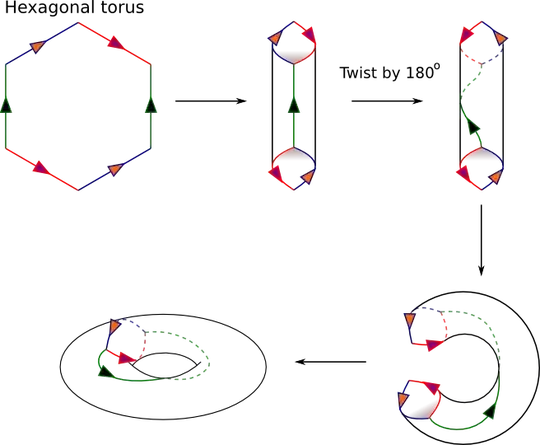Wikipedia's Eisenstein integer; Quotient of C by the Eisenstein integers says:
The quotient of the complex plane C by the lattice containing all Eisenstein integers is a complex torus of real dimension 2. This is one of two tori with maximal symmetry among all such complex tori.[citation needed] This torus can be obtained by identifying each of the three pairs of opposite edges of a regular hexagon. (The other maximally symmetric torus is the quotient of the complex plane by the additive lattice of Gaussian integers, and can be obtained by identifying each of the two pairs of opposite sides of a square fundamental domain, such as [0,1] × [0,1].)
This answer explains and shows how identifying opposite sides of a hexagon produces a torus, as do answers to What surface do we get by joining the opposite edges of a hexagon?
Question: Bringing opposite sides of a quadrilateral and a hexagon both produce a torus. Does any polygon side number $2n$ with $n \ge 2$ form a torus when all pairs of opposite sides are joined?
From the linked answer:
Image source: http://www.math.cornell.edu/~mec/Winter2009/Victor/part1.htm
